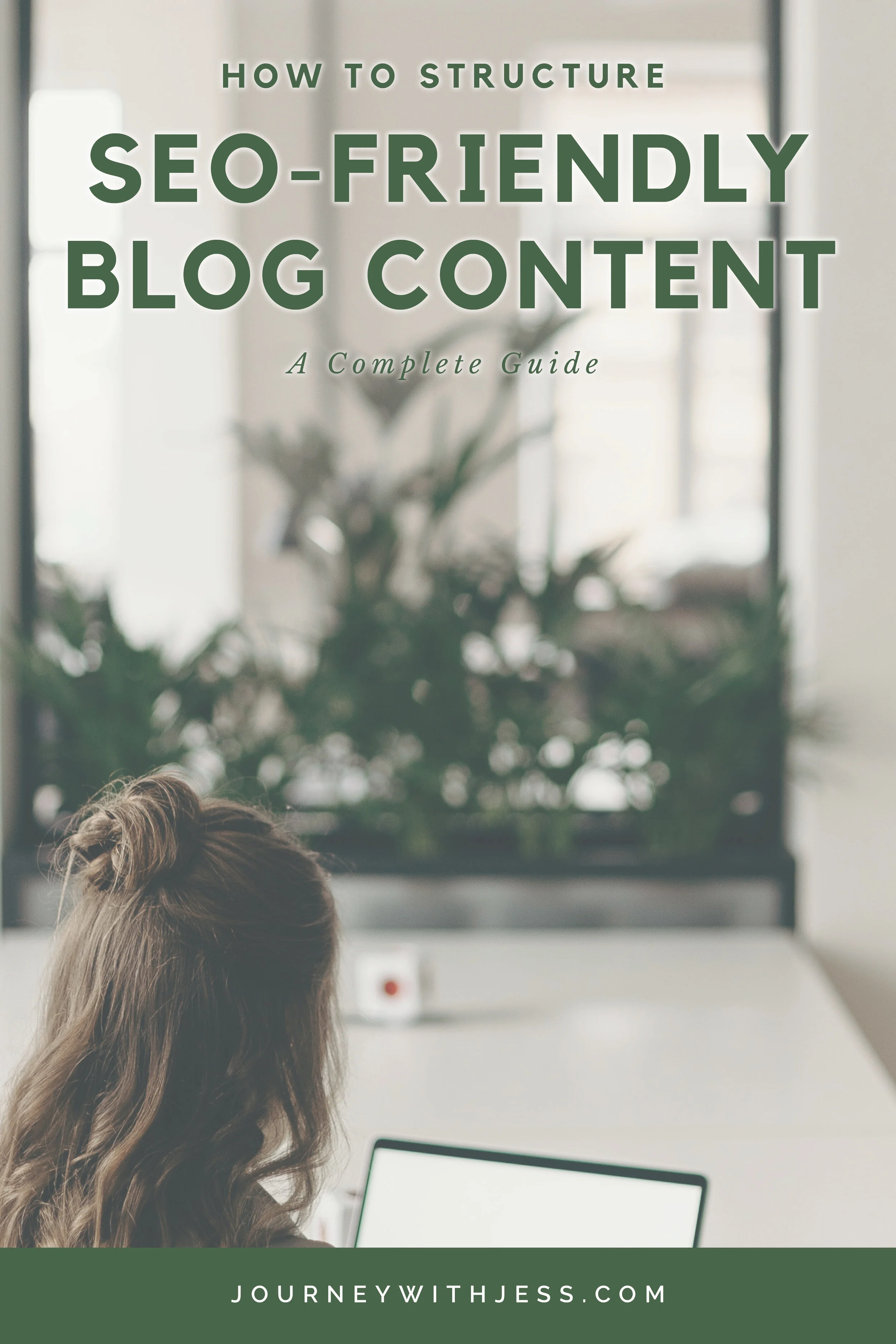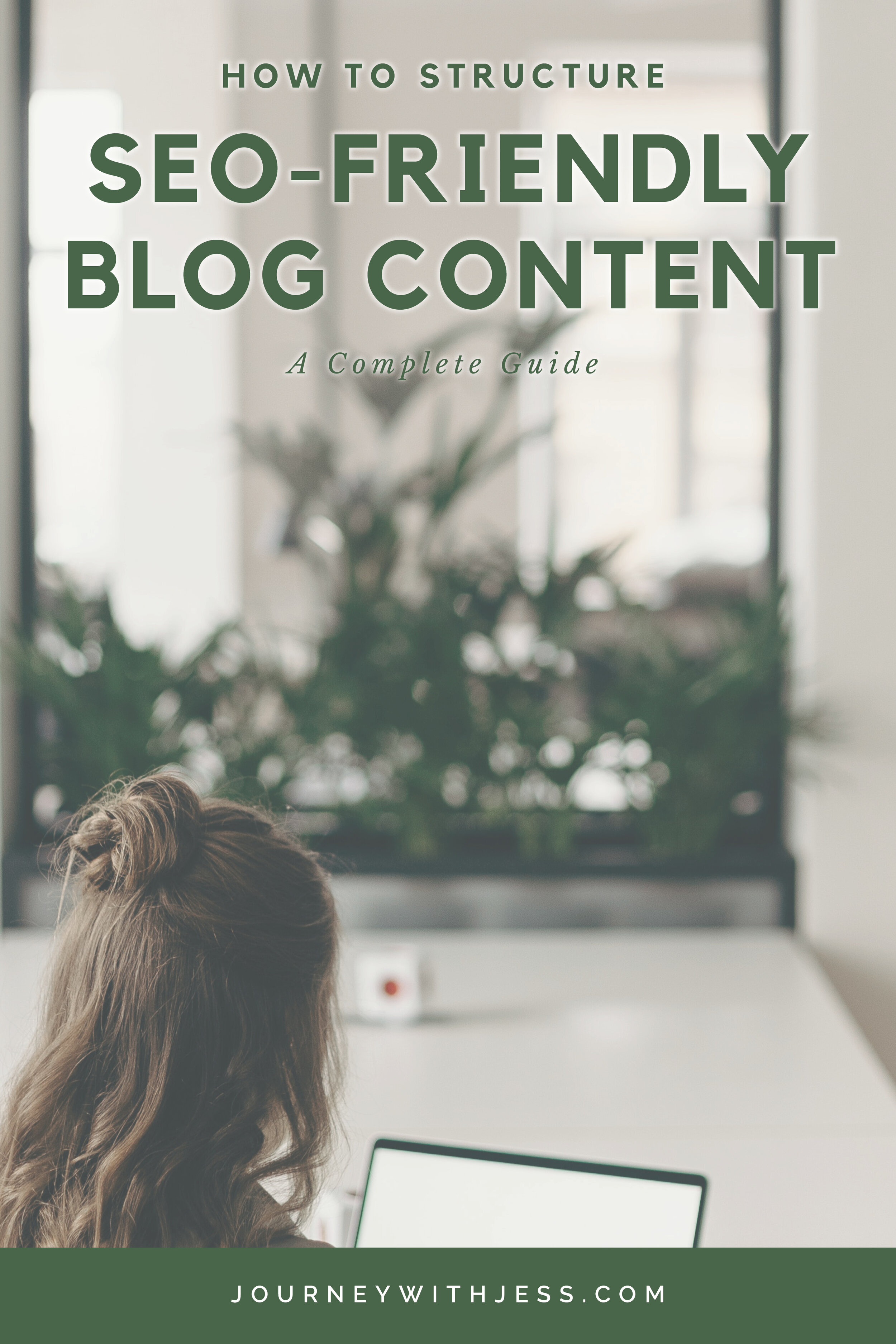How to Structure SEO-Friendly Blog Content
Starting a blog can be an overwhelming process. If all you thought your main focus was writing engaging and exciting content - think again! It requires a ton of multitasking as well as mastering new skills. One of the more difficult skill to learn is the purpose and importance of SEO. If you’re completely new you might be asking yourself “what exactly is SEO?” SEO helps your post rank better in search engines and improves the visibility of your site when it comes to relevant searches.
If you say to yourself “I’m a great writer who can create content that will keep my audience engaged as well as encourage repeat visitors.” That’s great – you’re halfway there. But what’s just as, if not more important than the writing is how Google ranks your website.
This post will focus on structuring and optimizing each post so it ranks well within a Google search. At the end of the day, it’s so important that Google recognizes the importance of your content within their own search algorithm. If you can master this, then you can expect your viewership to increase!
Starting a blog can be an overwhelming process. If all you thought your main focus was writing engaging and exciting content - think again! It requires a ton of multitasking as well as mastering new skills. One of the more difficult skill to learn is the purpose and importance of SEO. If you’re completely new you might be asking yourself “what exactly is SEO?” SEO helps your post rank better in search engines and improves the visibility of your site when it comes to relevant searches.
If you say to yourself “I’m a great writer who can create content that will keep my audience engaged as well as encourage repeat visitors.” That’s great – you’re halfway there. But what’s just as, if not more important than the writing is how Google ranks your website.
This post will focus on two key objectives: writing engaging content your readers will love and structuring and optimizing each post so it ranks well within a Google search. At the end of the day, it’s so important that Google recognizes the importance of your content within their own search algorithm. If you can master this, then you can expect your viewership to increase!
Structuring a Successful Blog Post
When I first started writing, I paid 0 attention to the structure of my blog posts. Don’t make the same mistake I did. I would write whatever I wanted and didn’t think twice about including keywords into my headers. To be perfectly honest, the only time I included headers was to help break up the paragraphs so it was easier on the eyes. Whoops. This was a BIG MISTAKE. With the little knowledge I knew about SEO (which at the time was minimal) I didn’t follow SEO best practices.
I was more interested in creating a social media presence and spent a lot of my time focusing on Pinterest. Don’t get me wrong – Pinterest is a great resource and helped my blog flourish and it never crossed my mind to consider Google. On some of my earlier posts, I wish I took the time to learn how to properly structure them.
Headers
If there’s one thing you take away from this, it’s the importance of headers. Not just what is said in the them but how they are said. If I would have researched this I would have discovered the proper way a blog post should be structured.
Don’t get me wrong - I was using headers. I just wasn’t implementing them properly. I either had too many or not enough. I also didn’t use H1 headers, I was using H3 headers because I liked how they looked better.
This was a huge mistake!
When it comes to headers, you never want to pick a lower header without first having an H1 header.
Confused? Let me explain.
First, the title of your blog post needs to be formatted using the H1 header. In most cases, your blog will already have this pre-coded. In case you’re unsure and you’d be more comfortable checking yourself, you can check this by visiting any blog post on your website, right clicking and selecting “View Page Source”. Do a Command-F search for “H1” and make sure your blog post title is wrapped in the H1 header.
Pro tip: H1 headers should only appear once per blog post, and once per page of your site. This is common SEO practice.
Opening
Once you’ve verified the H1 header for your title, the opening paragraph should appear next, directly after your blog post title. The opening paragraph should be around 3-5 sentences long. Don’t overwhelm your reader with a block of text from the get-go.
Include Your Keyword in the First Content Header
After your first paragraph, it’s time to use your first header within your content. The first header on your blog post should be an H2 header and include the keyword you are targeting with the blog post. It does not have to be a full sentence. Your first header should be direct and to the point. It could be something as simply as “Make More Money”.
If you need to break down content within your H2 section, then you should use H3 headers. Once that section is complete, you can add your second H2 heading and repeat the process. All headers should be broken up with at least a few sentences of text.
Personally, I don’t use more than two levels of headers (H2 and H3). Beyond that, I typically use bullet points if I need to convey certain things within an H3 header section. The decision is entirely up to you, and you have a few more headings to play around with (H4, H5 and H6) should you need them!
Congrats! This combination of headings and paragraphs will form the basic structure of your blog post!
Below is a chart I created to help you visualize the structure of a successful blog post.
The above chart is by no means set in stone. I created the chart as a suggestion for what has worked for me.
This guide should should be a starting point for you in-order to help you structure your content to make your website optimized for a Google search.
Have the above tips helped for you? I’d love to know if you noticed an up-tick in your website traffic.






